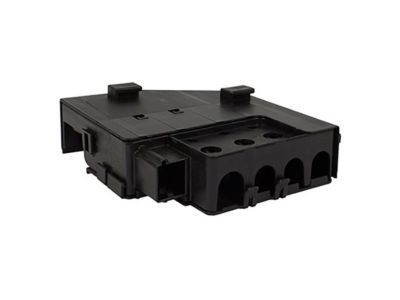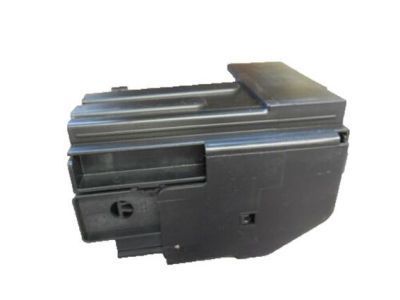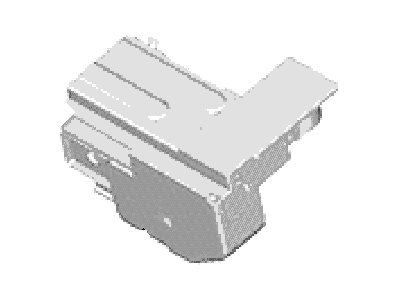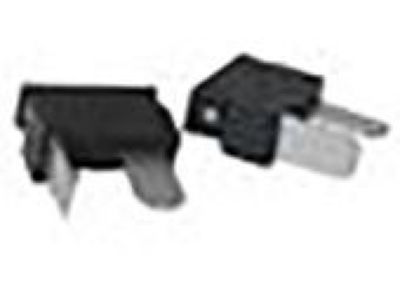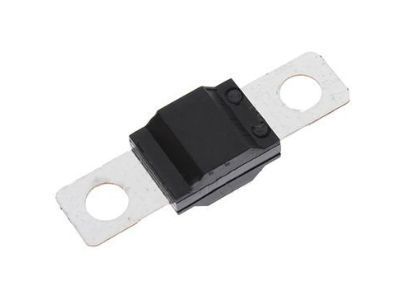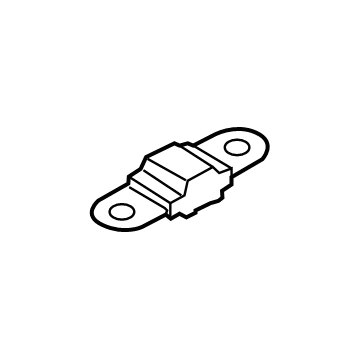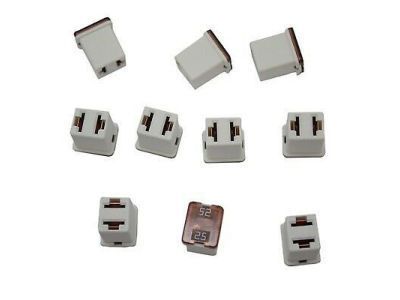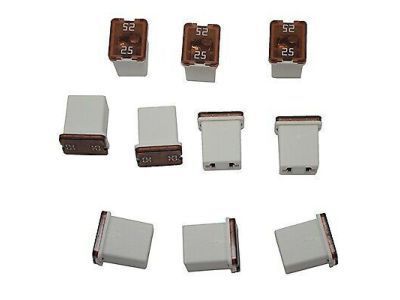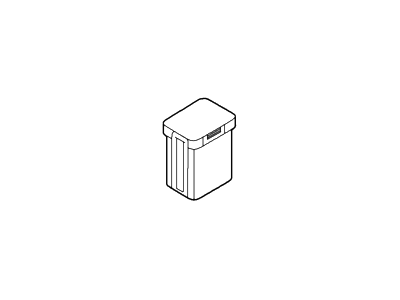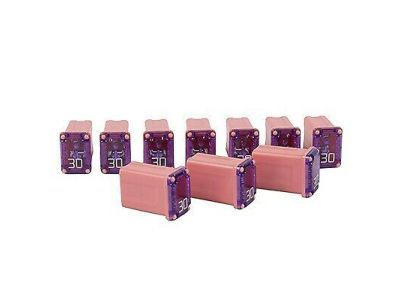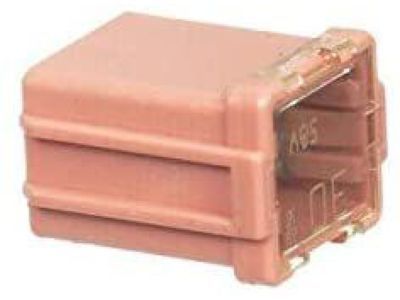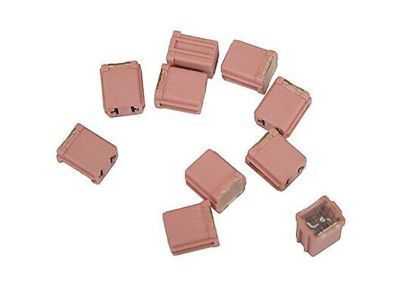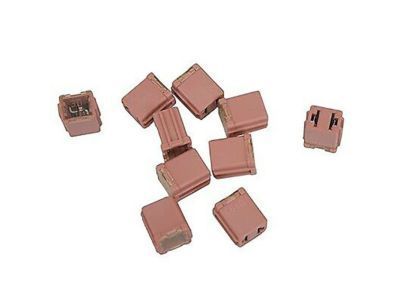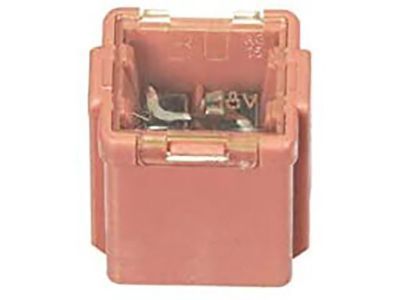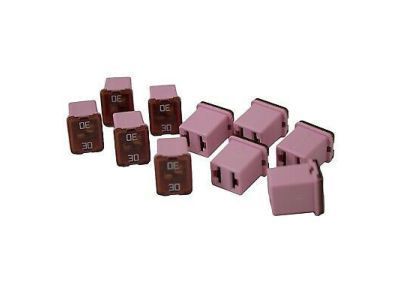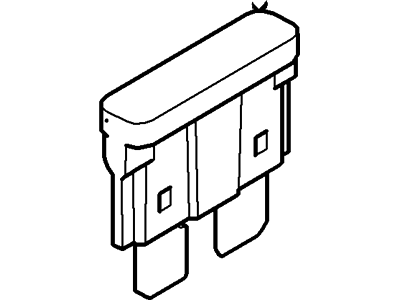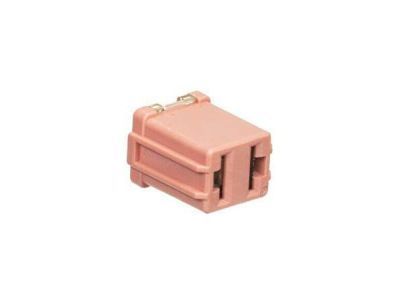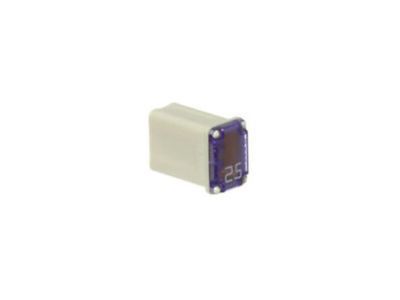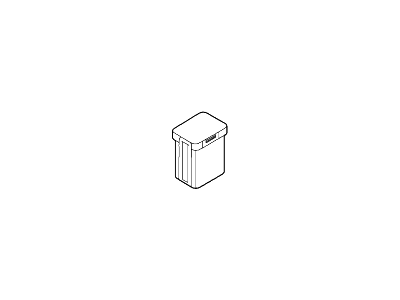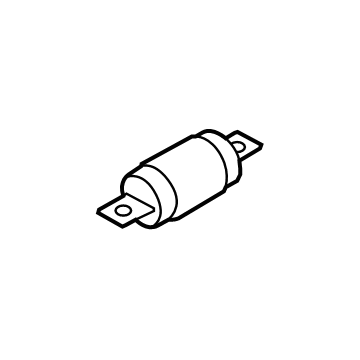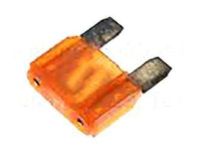

My Garage
My Account
Cart
Genuine Ford Fusion Fuse
Circuit Fuse- Select Vehicle by Model
- Select Vehicle by VIN
Select Vehicle by Model
orMake
Model
Year
Select Vehicle by VIN
For the most accurate results, select vehicle by your VIN (Vehicle Identification Number).
82 Fuses found
Ford Fusion Circuit Breaker Assembly
Part Number: DU5Z-14526-AA$33.06 MSRP: $52.73You Save: $19.67 (38%)Ships in 1-2 Business DaysFord Fusion Circuit Breaker Assembly
Part Number: DU5Z-14526-D$33.06 MSRP: $52.73You Save: $19.67 (38%)Ships in 1-2 Business DaysFord Fusion Diode Assembly
Part Number: F5TZ-14A604-A$2.93 MSRP: $4.17You Save: $1.24 (30%)Ships in 1 Business DayFord Fusion Circuit Breaker Assembly
Part Number: CV6Z-14526-CA$6.79 MSRP: $10.55You Save: $3.76 (36%)Ships in 1 Business DayFord Fusion Circuit Breaker Assembly
Part Number: 7T4Z-14526-B$4.45 MSRP: $6.91You Save: $2.46 (36%)Ships in 1-3 Business DaysFord Fusion Circuit Breaker Assembly
Part Number: DG9Z-14526-DA$4.25 MSRP: $6.60You Save: $2.35 (36%)Ships in 1-3 Business DaysFord Fusion Fuse
Part Number: 6E5Z-14526-BA$4.39 MSRP: $6.82You Save: $2.43 (36%)Ships in 1 Business DayFord Fusion Circuit Breaker Assembly
Part Number: 7T4Z-14526-C$4.38 MSRP: $6.80You Save: $2.42 (36%)Ships in 1 Business DayFord Fusion Fuse
Part Number: 6E5Z-14526-AA$4.39 MSRP: $6.82You Save: $2.43 (36%)Ships in 1-3 Business DaysFord Fusion Circuit Breaker Assembly
Part Number: HU5Z-14526-E$58.71 MSRP: $93.64You Save: $34.93 (38%)Ford Fusion Fuse
Part Number: FM5Z-14526-D$65.69 MSRP: $110.80You Save: $45.11 (41%)Ships in 1-2 Business DaysFord Fusion Fuse
Part Number: FM5Z-14526-B$92.73 MSRP: $156.40You Save: $63.67 (41%)Ships in 1-2 Business DaysFord Fusion Fuse
Part Number: FM5Z-14526-C$92.73 MSRP: $156.40You Save: $63.67 (41%)Ships in 1-2 Business DaysFord Fusion Circuit Breaker Assembly
Part Number: DU5Z-14526-G$33.06 MSRP: $52.73You Save: $19.67 (38%)Ships in 1-3 Business DaysFord Fusion Fuse
Part Number: DG9Z-14526-A$33.06 MSRP: $52.73You Save: $19.67 (38%)Ships in 1-2 Business DaysFord Fusion Fuse
Part Number: AE5Z-14526-B$15.96 MSRP: $25.45You Save: $9.49 (38%)Ships in 1-2 Business DaysFord Fusion Circuit Breaker Assembly
Part Number: DU5Z-14526-BA$33.06 MSRP: $52.73You Save: $19.67 (38%)Ships in 1-2 Business DaysFord Fusion Circuit Breaker Assembly
Part Number: DU5Z-14526-F$33.06 MSRP: $52.73You Save: $19.67 (38%)Ships in 1-2 Business DaysFord Fusion Circuit Breaker Assembly
Part Number: F6HZ-14526-L$13.92 MSRP: $21.64You Save: $7.72 (36%)Ships in 1 Business DayFord Fusion Circuit Breaker Assembly
Part Number: 7T4Z-14526-A$5.34 MSRP: $8.29You Save: $2.95 (36%)Ships in 1-3 Business Days
| Page 1 of 5 |Next >
1-20 of 82 Results
Ford Fusion Fuse
We provide a wide range of Ford Fusion Fuse at the best prices possible. If you need Ford Fusion Fuse, you can shop with confidence on our website. All our OEM parts come with a manufacturer's warranty and are delivered to your door step with a fast delivery service.
Ford Fusion Fuse Parts Questions & Experts Answers
- Q: What are fuses and how do they protect electrical circuits on Ford Fusion?A:The electrical circuits of the vehicle have protection by fuses, circuit breakers, and fusible links with the main fuse and relay panel installed in the engine room and the interior fuse and relay panel in the cabin. There is small, medium and large fuses used in the fuse blocks and they all have the blade terminal type; the medium and large fuses can be easily withdrawn by hand, but the small fuses require removal by pliers or a plastic fuse-puller. In such a situation, basically what one has to do is to check the fuse and this can be done a long with using a test light whether or not the terminal tips have power, if one knows that the fuse is blown then the element can be easily seen to have melted. If you decide to replace a burnt fuse it is always important to ensure that you replace it with a fuse of the same rating because even if a particular fuse will physically fit into the place of another one it is not advisable to do so because every circuit should be protected by a particular type of fuse. If a replacement fuse has blown almost instantly then the root cause is normally a short circuit because of faulty wiring and this should be sorted before any new fuses are fitted. Furthermore, some circuits are protected by fusible links which is employed in high current applications and which deforms under excessive current; when replacing a problematic fusible link it has to be replaced by another one from the same specification and the circuit has to be checked in case the new link is also problematic.
